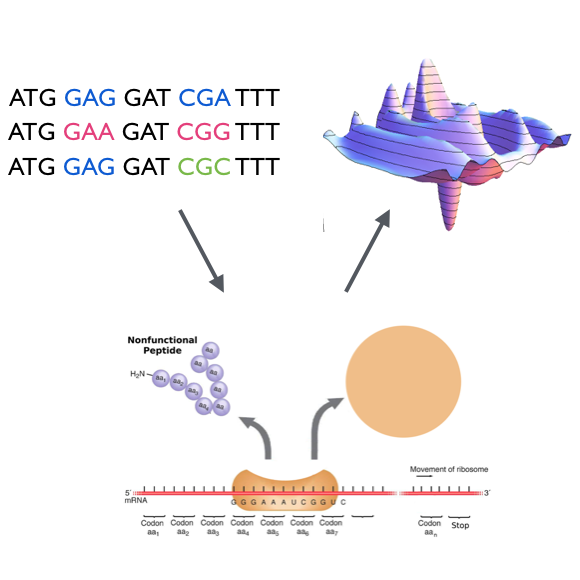Abstract
Codon usage bias (CUB) has been documented across a wide range of taxa and is the subject of numerous studies. While most explanations of CUB invoke some type of natural selection, most measures of CUB adaptation are heuristically defined. In contrast, we present a novel and mechanistic method for defining and contextualizing CUB adaptation to reduce the cost of nonsense errors during protein translation. Using a model of protein translation, we develop a general approach for measuring the protein production cost in the face of nonsense errors of a given allele as well as the mean and variance of these costs across its coding synonyms. We then use these results to define the nonsense error adaptation index (NAI) of the allele or a contiguous subset thereof. Conceptually, the NAI value of an allele is a relative measure of its elevation on a specific and well-defined adaptive landscape. To illustrate its utility, we calculate NAI values for the entire coding sequence and across a set of nonoverlapping windows for each gene in the Saccharomyces cerevisiae S288c genome. Our results provide clear evidence of adaptation to reduce the cost of nonsense errors and increasing adaptation with codon position and expression. The magnitude and nature of this adaptation are also largely consistent with simulation results in which nonsense errors are the only selective force driving CUB evolution. Because NAI is derived from mechanistic models, it is both easier to interpret and more amenable to future refinement than other commonly used measures of codon bias. Further, our approach can also be used as a starting point for developing other mechanistically derived measures of adaptation such as for translational accuracy.
